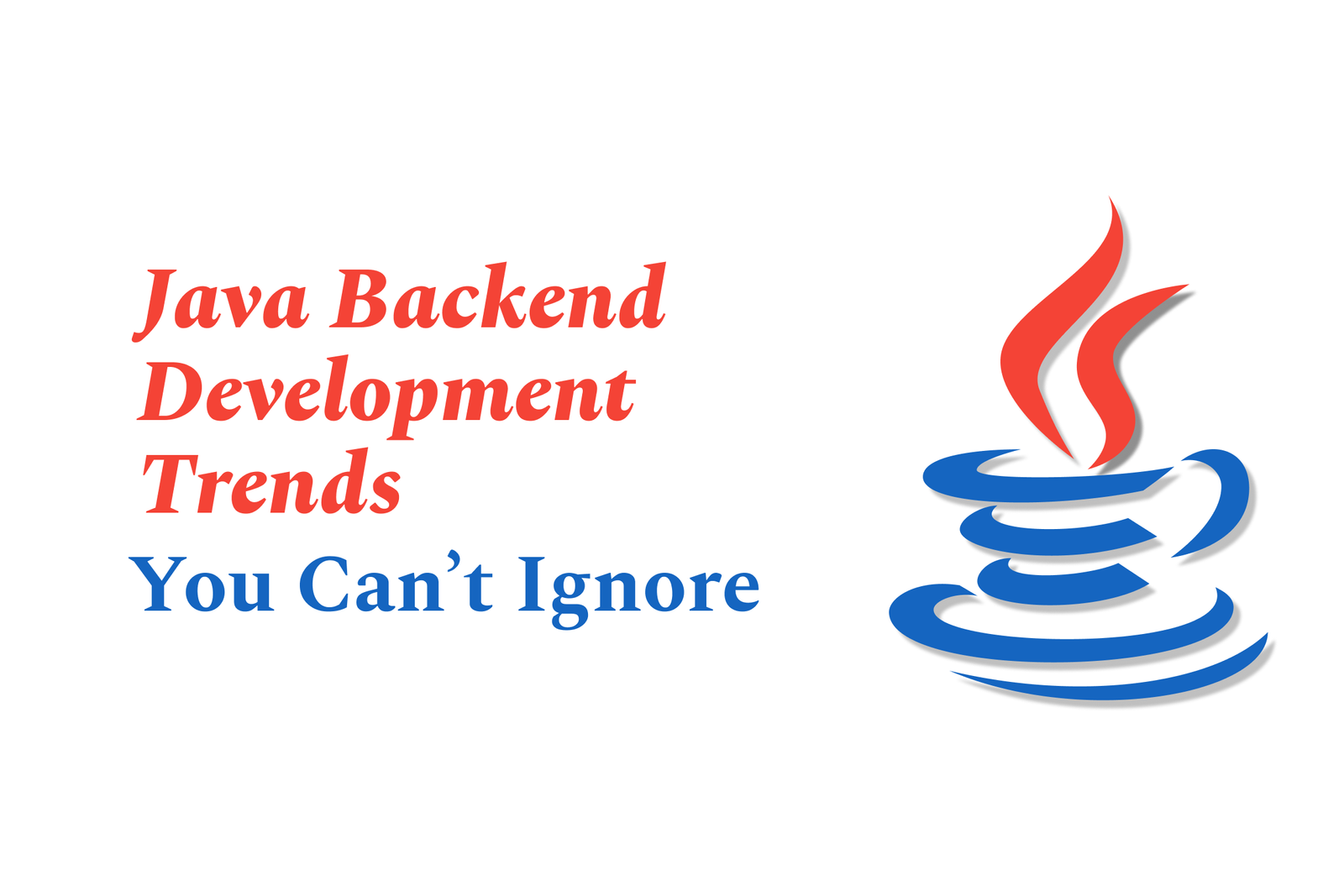Java Backend Development Trends You Can?T Ignore
Java backend development is evolving rapidly with trends like cloud-native apps, microservices, reactive programming, and serverless architectures. Embracing modern Java features, AI integration, strong security, and automation is essential to build scalable, efficient, and future-ready backend systems.
Java Backend Development Trends You Can’t Ignore
1 ) Rise of Cloud Native Java Development
Cloud computing has become mainstream, and Java backend development is increasingly shifting toward cloud native architectures. Developers leverage containerization (e.g., Docker), orchestration tools like Kubernetes, and cloud services from AWS, Azure, and Google Cloud to create scalable, resilient backend systems.
2 ) Microservices and Modular Architectures
Breaking monolithic Java applications into microservices enhances flexibility, scalability, and maintainability. Java frameworks such as Spring Boot and Quarkus facilitate creating lightweight, container friendly microservices, making it easier to develop and deploy independently deployable components.
3 ) Reactive Programming and Non Blocking APIs
To meet demands for highly concurrent and responsive applications, reactive programming is gaining ground in Java backend development. Frameworks like Project Reactor and Vert.x allow developers to build non blocking, event driven services that improve performance under heavy load.
4 ) Adoption of Modern Java Features
New Java versions introduce powerful features like records, sealed classes, pattern matching, and improved concurrency utilities. Backend developers are increasingly embracing these to write cleaner, more efficient code, reducing boilerplate and enhancing readability.
5 ) Serverless Backend Development
Serverless computing is influencing Java backend trends, enabling developers to build functions triggered by events without managing server infrastructure. Frameworks and platforms now support Java for serverless deployments, helping optimize resource usage and cost.
6 ) Integration of AI and Machine Learning Services
Java backends are incorporating AI/ML capabilities either by integrating with external AI services or embedding lightweight machine learning models. This trend reflects broader AI adoption in backend workflows like data processing, recommendation engines, and predictive analytics.
7 ) Focus on Security and Compliance
As cyber threats evolve, Java backend developers prioritize secure coding practices, API security, and compliance with data protection regulations. Tools for automated security testing and frameworks supporting OAuth, JWT, and encryption are becoming essential parts of the backend development process.
8 ) Low Code/No Code Backend Tools for Java
To accelerate development and democratize software creation, low code and no code platforms that generate Java backend components are gaining attention. These tools help teams rapidly prototype and deliver backend services, reducing time to market.
9 ) Increased Use of Automation and CI/CD Pipelines
Automation through CI/CD pipelines ensures faster, more reliable deliveries of Java backend applications. Developers are adopting tools like Jenkins, GitHub Actions, and GitLab CI along with container registries and automated testing frameworks to streamline deployment cycles.
10 ) Growing Emphasis on API First Development and GraphQL
REST APIs remain dominant, but API first development practices and GraphQL adoption are rising to deliver more flexible and efficient data fetching mechanisms for Java backends. This trend enables better client server interactions and supports modern frontend needs.
These trends collectively underscore the evolving practices in Java backend development, emphasizing scalability, agility, modern programming paradigms, and integration with emerging technologies to meet today’s dynamic enterprise requirements.
https://justacademy.in/news-detail/android-apps-leveraging-machine-learning
https://justacademy.in/news-detail/android-app-localization-trends
https://justacademy.in/news-detail/ios-app-performance-optimization-tips
https://justacademy.in/news-detail/major-companies-adopting-flutter-in-2025
https://justacademy.in/news-detail/desktop-apps-in-flutter:-pros-and-cons
Related Posts
Java supports GDPR and data privacy by enabling secure data handling through encryption, controlled access, and precise data management. It allows developers to minimize PII exposure, ensure data confidentiality, and design workflows that comply with data protection regulations effectively.
Java code quality tools have evolved to include advanced static analysis, integrated security checks, and AI-powered code reviews. These updates help developers detect bugs, enforce coding standards, and enhance security, streamlining the development process and improving overall code reliability.
Java remains a cornerstone in big tech companies, evolving with modern features like records, pattern matching, and virtual threads. Its robust ecosystem, enhanced performance, and growing AI integrations keep it vital for both legacy systems and innovative new projects.
Java and CI/CD pipeline optimizations streamline Java application development by automating builds, tests, and deployments. They improve efficiency through parallelization, caching, and secure secrets management, enabling faster feedback loops and more reliable, scalable software delivery.
Java supports modern cryptography standards through its flexible Java Cryptography Architecture (JCA), enabling integration of advanced algorithms like AES, EdDSA, and post-quantum tools. Libraries like Bouncy Castle offer FIPS-certified, hardware-accelerated implementations for secure development.
Java 23 enhances record patterns by enabling concise, direct destructuring of record components within pattern matching, simplifying type checks and data extraction. This improvement boosts code readability and expressiveness by reducing boilerplate in handling immutable data classes.
Java remains a top choice for mobile app backends, powering scalable, secure, and high-performance server-side solutions. Latest trends include cloud-native microservices, reactive programming, and enhanced JVM optimizations, enabling efficient, flexible, and robust mobile backend development.
Java SE 24 and LTS Java SE 21 offer enhanced features and performance, while Apache Spark 4.0.0 introduces Scala 2.13 support and advanced ML and SQL capabilities. Together, they empower developers to build scalable, high-performance data applications with modern tools.
JUnit 5 modernizes Java testing with a modular architecture, improved assertions, and seamless Java 8+ support. Beyond JUnit, tools like Mockito and AssertJ enhance mocking and assertions, creating a powerful, flexible ecosystem for writing clean, efficient Java unit tests.
Java plays a pivotal role in cloud automation tools by providing a robust, platform-independent language used to build scalable automation frameworks like Jenkins and Selenium, enabling efficient CI/CD pipelines, testing, and orchestration across diverse cloud environments.










